白消安
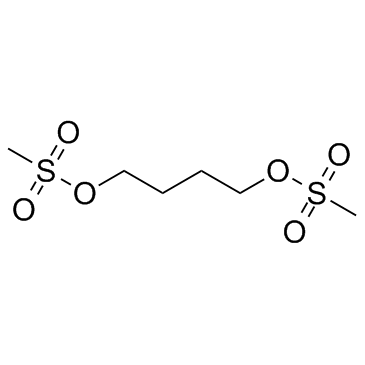
白消安结构式

|
常用名 | 白消安 | 英文名 | Busulfan |
|---|---|---|---|---|
| CAS号 | 55-98-1 | 分子量 | 246.302 | |
| 密度 | 1.4±0.1 g/cm3 | 沸点 | 464.0±28.0 °C at 760 mmHg | |
| 分子式 | C6H14O6S2 | 熔点 | 114-117 °C(lit.) | |
| MSDS | 中文版 美版 | 闪点 | 234.4±24.0 °C | |
| 符号 |



GHS02, GHS06, GHS08 |
信号词 | Danger |
白消安用途Busulfan 是一种有效的烷化剂 (alkylator),具有化疗作用。 |
| 中文名 | 白消安 |
|---|---|
| 英文名 | busulfan |
| 中文别名 | 二甲磺酸-1,4-丁二醇 | 二甲磺酸丁酯 | 1,4-双甲基磺氧基丁烷 | 不育磺 | 1,4-丁二醇二甲烷磺酸盐 |
| 英文别名 | 更多 |
| 描述 | Busulfan 是一种有效的烷化剂 (alkylator),具有化疗作用。 |
|---|---|
| 相关类别 | |
| 靶点 |
DNA Alkylator[1] |
| 体外研究 | 白消安是一种有效的烷化剂,可用作化学治疗剂。 Busulfan(120μM)通过Erk和p38 MAPK途径导致WI38细胞过早衰老,降低GSH并增加ROS产生,但NADPH氧化酶可抑制产生[1]。 |
| 体内研究 | 白消安(40mg/kg,ip)增加细胞凋亡并降低小鼠的睾丸重量。与对照相比,Busulfan处理小鼠的睾丸表现出更高水平的pRB表达,抑制Rb磷酸化和PCNA表达[2]。 Busulfan(2.5,5.0 mg/kg,ip)在大鼠中以剂量依赖性方式导致早期出现持续性esturs。白消安(5.0 mg/kg)也会增加子宫腺癌的发病率和子宫肿瘤病变的多样性。此外,Busulfan降低大鼠血清17β-雌二醇(E2),孕酮和抑制素水平,并且仅在5.0 mg/kg时提高E2 /孕酮比例[3]。 |
| 细胞实验 | 将WI38细胞以60,000个细胞/孔接种于24孔板的孔中并培养过夜。用Busulfan处理它们24小时,然后除去药物并将细胞在新鲜培养基中培养最多11天。未处理的细胞用作对照。每3天对细胞进行胰蛋白酶消化,计数并在1:5和1:2稀释的新鲜培养基中进行传代培养,分别用于对照未处理和经Busulfan处理的细胞[1]。 |
| 动物实验 | 小鼠[2]使用120只年龄为8至12周(30-40g)的ICR雄性小鼠。 8周龄ICR雄性小鼠接受单次腹膜内注射用芝麻油稀释的Busulfan(40mg / kg)。将小鼠置于22±1℃的线笼中,12小时光暗循环,70%湿度,随意喂食[2]。 |
| 参考文献 |
| 密度 | 1.4±0.1 g/cm3 |
|---|---|
| 沸点 | 464.0±28.0 °C at 760 mmHg |
| 熔点 | 114-117 °C(lit.) |
| 分子式 | C6H14O6S2 |
| 分子量 | 246.302 |
| 闪点 | 234.4±24.0 °C |
| 精确质量 | 246.023178 |
| PSA | 103.50000 |
| LogP | -0.52 |
| 外观性状 | 白色结晶。 |
| 蒸汽压 | 0.0±1.1 mmHg at 25°C |
| 折射率 | 1.471 |
| 储存条件 | Hygroscopic, Refrigerator, Under Inert Atmosphere |
| 稳定性 | Moisture Sensitive |
| 水溶解性 | Decomposes |
| 分子结构 | 1、 摩尔折射率:50.94 2、 摩尔体积(cm3/mol):182.3 3、 等张比容(90.2K):476.5 4、 表面张力(dyne/cm):46.6 5、 极化率(10-24cm3):20.19 |
| 计算化学 | 1.疏水参数计算参考值(XlogP):无 2.氢键供体数量:0 3.氢键受体数量:6 4.可旋转化学键数量:7 5.互变异构体数量:无 6.拓扑分子极性表面积104 7.重原子数量:14 8.表面电荷:0 9.复杂度:294 10.同位素原子数量:0 11.确定原子立构中心数量:0 12.不确定原子立构中心数量:0 13.确定化学键立构中心数量:0 14.不确定化学键立构中心数量:0 15.共价键单元数量:1 |
| 更多 | 1.性状:白色结晶性粉末。 2.熔点(℃):119。 3.溶解性:不溶于水,但可以缓慢溶解,同时发生水解作用。在25℃丙酮中溶解度为2.4g/100ml,在乙醇中溶解度0.1g/100ml,几乎无臭。 |
|
|||||||||||||||||||||||||||||||||||||||||||||||||||||||||||||||||||||||||||||||||||||||||||||||||||||||||||||||||||||||||||||||||||||||||||||||||||||||||||||||||||||||||||||||||||||||||||||||||||||||||||||||||||||||||||||||||||||||||||||||||||||||
| 符号 |



GHS02, GHS06, GHS08 |
|---|---|
| 信号词 | Danger |
| 危害声明 | H225-H301 + H311 + H331-H370 |
| 警示性声明 | P210-P260-P280-P301 + P310-P311 |
| 危害码 (欧洲) | T:Toxic |
| 风险声明 (欧洲) | R23/24/25;R36/37/38;R45;R46;R63 |
| 安全声明 (欧洲) | S53-S36/37/39-S45-S28A |
| 危险品运输编码 | UN 2811 6.1/PG 1 |
| WGK德国 | 3 |
| RTECS号 | EK1750000 |
| 包装等级 | III |
| 危险类别 | 6.1(b) |
| 海关编码 | 2942000000 |
|
~86% 
白消安 55-98-1 |
| 文献:Ohta; Kohda; Kimoto; Okano; Kawazoe Chemical and Pharmaceutical Bulletin, 1988 , vol. 36, # 7 p. 2410 - 2416 |
|
~% 
白消安 55-98-1 |
| 文献:US2013/211055 A1, ; Page/Page column ; |
|
~% 
白消安 55-98-1 |
| 文献:J. Gen. Chem. USSR (Engl. Transl.), , vol. 56, # 7 p. 1547 - 1558,1373 - 1382 |
|
~%
详细
|
| 文献:Justus Liebigs Annalen der Chemie, , vol. 631, p. 180 - 184 |
|
~% 
白消安 55-98-1 |
| 文献:Justus Liebigs Annalen der Chemie, , vol. 631, p. 180 - 184 |
|
~% 
白消安 55-98-1 |
| 文献:Justus Liebigs Annalen der Chemie, , vol. 631, p. 180 - 184 |
| 白消安上游产品 9 | |
|---|---|
| 白消安下游产品 10 | |
1.由甲基磺酰氯与1,4-丁二醇缩合而得。
2.制法:
于装有搅拌器、温度计、滴液漏斗的反应瓶中,加入1,4-丁二醇(2)13g(0.144mol),吡啶130g,冷却至0℃,搅拌下慢慢滴加甲基磺酰氯40g(0.35mol)。加完后继续搅拌反应2h。抽滤析出的结晶,以少量蒸馏水洗涤,干燥,得白色结晶1,4-双(甲基磺酰氯)丁烷(1)34g,mp113~116℃,收率95.8%。
| 海关编码 | 2942000000 |
|---|
|
Characterization of immortalized dairy goat male germline stem cells (mGSCs).
J. Cell. Biochem. 115(9) , 1549-60, (2014) Male germline stem cells (mGSCs), in charge for the fertility in male testis, are the only kind of adult stem cells that transmit genetic information to next generation, with promising prospects in ge... |
|
|
Cheminformatics analysis of assertions mined from literature that describe drug-induced liver injury in different species.
Chem. Res. Toxicol. 23 , 171-83, (2010) Drug-induced liver injury is one of the main causes of drug attrition. The ability to predict the liver effects of drug candidates from their chemical structures is critical to help guide experimental... |
|
|
Translating clinical findings into knowledge in drug safety evaluation--drug induced liver injury prediction system (DILIps).
J. Sci. Ind. Res. 65(10) , 808, (2006) Drug-induced liver injury (DILI) is a significant concern in drug development due to the poor concordance between preclinical and clinical findings of liver toxicity. We hypothesized that the DILI typ... |
| 4-methylsulfonyloxybutyl methanesulfonate |
| Myelosan |
| Misulban |
| 1,4-Butanediyl dimethanesulfonate |
| Mitosan |
| Tetramethylenester kyseliny methansulfonove [Czech] |
| butane-1,4-diyl di(methanesulfonate) |
| Butan-1,4-diyldimethansulfonat |
| 1,4-Butanediol Dimesylate |
| Busulfan |
| 4-((Methylsulfonyl)oxy)butyl methanesulfonate |
| tetramethylene di(methanesulfonate) |
| Leucosulfan |
| Myleran |
| UNII-G1LN9045DK |
| 2041 C.B. |
| Busulfex |
| (1,4-Bis(methanesulfonyloxy)butane) |
| Mitostan |
| 1,4-Di(methanesulfonyloxy)butane |
| busulphan |
| Myeloleukon |
| 1,4-Butanediol, dimethanesulfonate |
| Mylecytan |
| Butane-1,4-diyl dimethanesulfonate |
| Methanesulfonic Acid Tetramethylene Ester |
| Mielucin |
| MFCD00007562 |
| EINECS 200-250-2 |

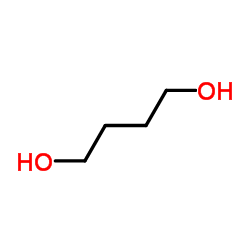
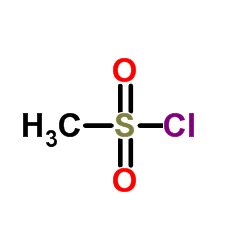
![2-[2-[(E)-2-[4-(dimethylamino)phenyl]ethenyl]-6-methylpyran-4-ylidene]propanedinitrile结构式](https://image.chemsrc.com/caspic/139/96042-30-7.png)

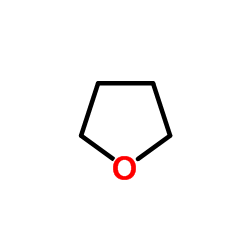

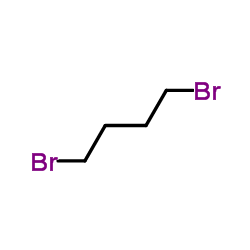



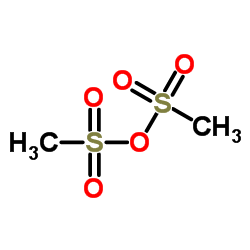
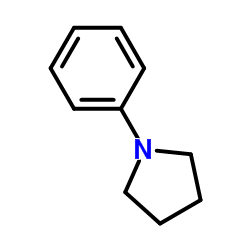 CAS号4096-21-3
CAS号4096-21-3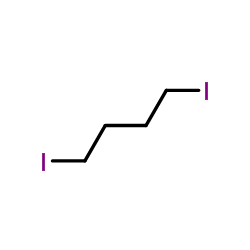 CAS号628-21-7
CAS号628-21-7 CAS号203571-17-9
CAS号203571-17-9 CAS号15394-33-9
CAS号15394-33-9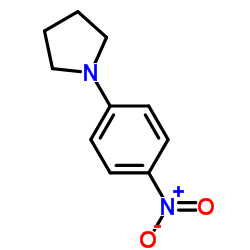 CAS号10220-22-1
CAS号10220-22-1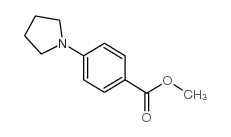 CAS号129414-26-2
CAS号129414-26-2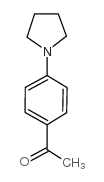 CAS号21557-09-5
CAS号21557-09-5![cyclohexyl-[4-[cyclohexyl(phenyl)phosphanyl]butyl]-phenylphosphane结构式](https://image.chemsrc.com/caspic/380/72144-83-3.png) CAS号72144-83-3
CAS号72144-83-3 CAS号77354-98-4
CAS号77354-98-4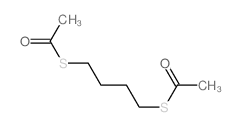 CAS号6633-90-5
CAS号6633-90-5
